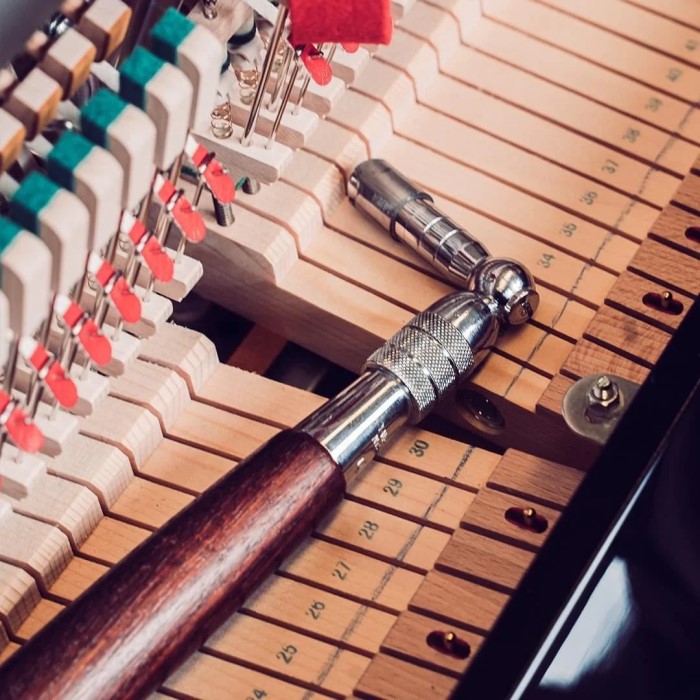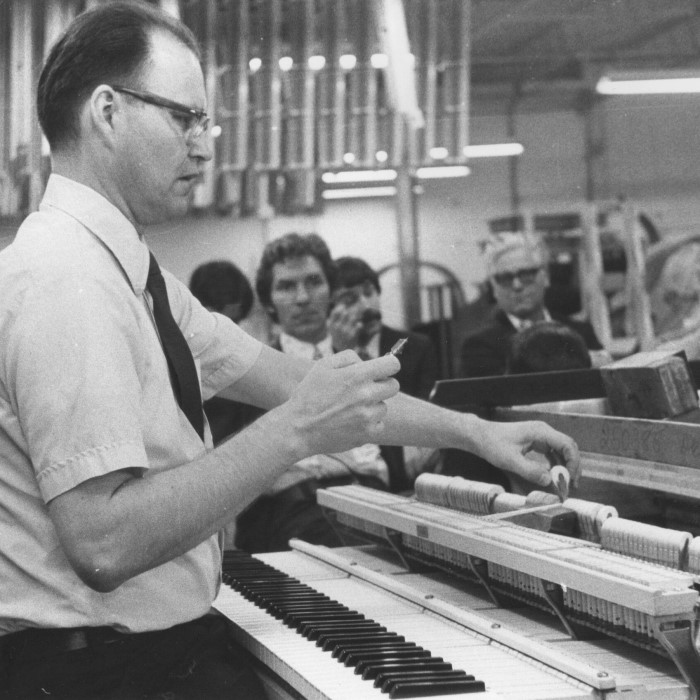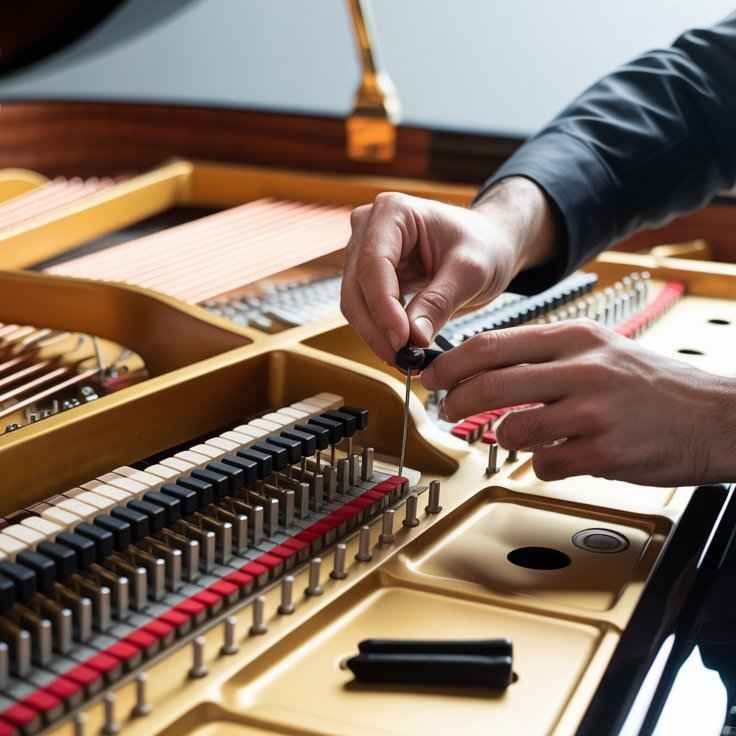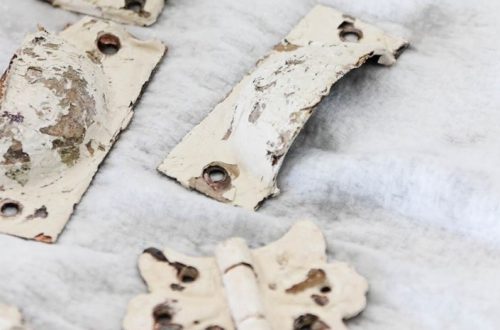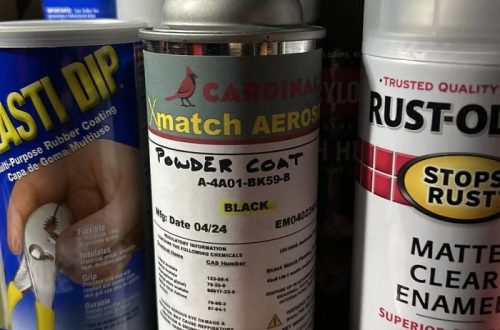What is Piano Tuning?
Piano tuning is the process of adjusting the tension of a piano’s strings. This ensures that the instrument produces the correct pitch for each note. How much does it cost to tune a piano? Each piano key corresponds to a string or group of strings. Over time, these strings can go out of tune due to factors like temperature, humidity, and regular use. Tuning restores the harmony between the strings.
A trained piano technician uses specialized tools to make these adjustments. They listen carefully to ensure the pitches are accurate. The goal is to bring the piano back to its standard tuning, known as A440. This means the A above middle C vibrates at 440 hertz, which serves as the universal reference pitch.
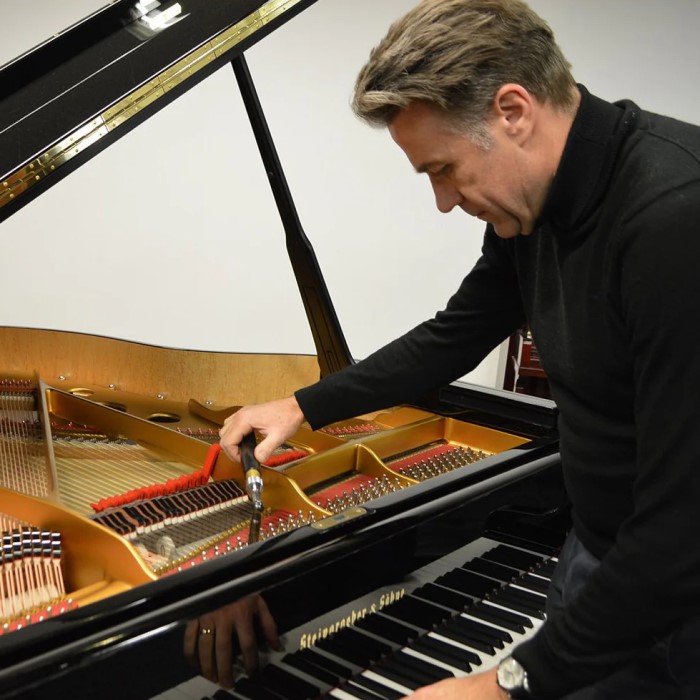
Regular tuning is crucial for preserving the piano’s sound quality and structural health. When a piano is out of tune, it affects the overall harmony of the music. It can also strain the instrument’s internal components.
Piano tuning should not be confused with other maintenance tasks. It does not involve cleaning or repairing the piano. However, technicians might address minor issues like loose screws or slightly misaligned keys during the tuning process. For a well-maintained piano, tuning twice a year is generally recommended.
Understanding what piano tuning involves helps you appreciate its importance. It also explains why the cost of tuning is a worthwhile investment in your piano’s longevity and performance.
Why Is Piano Tuning Important?
Piano tuning ensures your instrument produces harmonious and accurate sound. A well-tuned piano provides a better musical experience and enhances the overall quality of sound. Regular tuning maintains the piano’s tonal accuracy, which is essential for musicians and listeners alike.
Tuning also helps in maintaining the structural integrity of the piano. Improper string tension can stress the soundboard and other internal components. Over time, this strain can lead to costly repairs or even irreversible damage.
Beyond sound quality, tuning helps protect your investment. A piano is a significant expense and proper maintenance ensures its longevity. Regularly tuned pianos also retain their value better, which is important if you decide to sell or trade it.
Environmental factors like humidity and temperature can knock a piano out of tune. Regular adjustments help counteract these effects. Moreover, consistent tuning can prevent small problems from escalating. For example, a technician may notice and fix minor issues during a tuning session.
For students and professional musicians, a properly tuned piano encourages better musical training. It enhances the player’s ability to develop a good ear for pitch and harmony. This is critical for accurate playing and musical interpretation.
In summary, piano tuning is more than just adjusting strings. It’s an investment in sound quality, structural health, and the lifespan of your piano. Make it a priority to tune your piano regularly to enjoy its best performance.
Factors Affecting the Cost of Piano Tuning
How much does it cost to tune a piano? The cost of piano tuning can vary based on several key factors. Understanding these helps you estimate expenses more accurately and make informed decisions about maintaining your instrument. Below are the main factors that influence the cost:
Type and Condition of the Piano
The type and condition of your piano significantly affect tuning costs. Upright pianos are generally less expensive to tune than grand pianos due to differences in size and complexity.
Older pianos or those in poor condition may require additional work. If the strings are heavily out of tune, the technician may need extra time to restore proper tension. Neglected pianos might also need pitch correction, which increases the overall cost. In contrast, well-maintained pianos may need less time and effort to tune.
Frequency of Tuning
How often you tune your piano also impacts its cost. If you tune regularly, the process is straightforward and quicker, which reduces expenses. Pianos that haven’t been tuned for years may require extensive adjustments. These adjustments, including pitch corrections, take more time and incur higher charges.
Sticking to the recommended schedule of twice a year minimizes tuning difficulties. Regular maintenance keeps your piano in stable, consistent tuning, which in turn helps avoid additional costs.
Location and Availability of Technicians
Your location plays a significant role in determining piano tuning costs. Prices often vary depending on the cost of living in your area. Urban areas usually have more technicians, which increases competition and may lower rates.
In remote or rural areas, technicians might charge travel fees, adding to the overall cost. Limited availability of experienced technicians in some regions can also lead to higher prices due to increased demand.
In conclusion, understanding these factors can help you budget effectively for piano tuning. Whether it’s the type of piano, tuning frequency, or technician availability, each element plays a crucial role in determining the cost. Regular maintenance and proper care can help manage these expenses over time.
Average Cost of Piano Tuning
How much does it cost to tune a piano? The average cost to tune a piano typically ranges between $100 and $200. However, prices can vary based on a few key factors.
Type of Piano and Complexity of the Job
The type of piano you have affects the cost. Upright pianos are simpler to tune and usually cost less. Grand pianos, due to their larger size and intricate mechanisms, typically require more work and are priced higher.
Older pianos or neglected ones may need additional adjustments. These include pitch correction and fine-tuning, which can increase the cost. A well-maintained piano will usually cost less to tune because it requires less time and effort.
Location and Technician Availability
Your location influences piano tuning costs. Urban areas often have more technicians, leading to competitive pricing. In rural areas, travel fees may be included, raising the overall price. The availability of skilled technicians can also play a role; limited options may lead to higher rates.
Frequency of Tuning
How often you tune your piano impacts the cost. Pianos tuned regularly require less time for adjustments, making the process quicker, and therefore cheaper. On the other hand, if a piano hasn’t been tuned in years, restoring proper pitch can be a lengthy process, resulting in increased fees.
Additional Expenses
Sometimes, additional services like repairs or pitch raising might be needed during tuning. These services add to the overall cost. Therefore, it’s important to factor in potential extras when estimating expenses.
In summary, the average piano tuning cost depends on piano type, location, tuning frequency, and additional services. Regular maintenance helps manage costs and keeps your piano in excellent condition.
Additional Services That May Impact Costs
When tuning a piano, additional services may affect your overall expenses. These services help fix specific issues or improve the piano’s sound quality. While tuning primarily focuses on adjusting string tension, certain conditions require extra steps, increasing the costs.
Pitch Correction or Raising
Pitch correction happens when a piano has not been tuned for a long time. Over time, strings can lose their proper tension, causing notes to sound out of pitch. In such cases, technicians perform pitch raising. This process involves gradually restoring the strings to their standard tension. It requires additional time and precision.
Pitch raising ensures the piano meets the universal standard of A440 tuning. If your piano has drifted far from this standard, expect higher costs. The technician may need multiple adjustments to achieve stable tuning. Neglected pianos often require this time-intensive service, increasing tuning charges significantly.
Repairs During Tuning
During the tuning process, technicians may discover minor or major issues affecting the piano’s performance. Repairs like fixing loose screws, aligning keys, or replacing broken strings might be needed.
If additional repairs are required, they will increase the cost. Minor fixes, like adjusting parts, usually cost less. However, replacing or restoring essential components, such as a damaged soundboard, can significantly raise expenses. The technician will discuss repair options with you before starting work.
Addressing repairs promptly ensures your piano remains functional and maintains its sound quality. Ignoring issues could lead to further damage requiring costly repairs later.
Providing regular maintenance and tuning can help minimize the risk of pitch correction or extensive repairs. While these extra services may increase the upfront cost, they are an investment in the piano’s health and durability. Understanding these additional costs helps you budget wisely for keeping your piano in excellent playing condition.
DIY Piano Tuning vs Hiring a Professional
How much does it cost to tune a piano? When it comes to piano tuning, you have two primary choices: DIY tuning or hiring a professional. Both options have their pros and cons, which can impact the quality, cost, and lifespan of your piano. Understanding these factors can help you decide which option best suits your needs.
DIY Piano Tuning
DIY piano tuning might seem like a cost-effective option if you’re on a tight budget. Here are the main things to consider:
- Cost Savings: Tuning your piano yourself eliminates the expense of hiring a technician.
- Equipment Cost: You need to purchase tuning tools, like a tuning hammer and mutes, which can be pricey.
- Learning Curve: Tuning a piano requires precision. It takes time to learn the necessary skills.
- Risk of Damage: Without professional training, you risk damaging the strings or other components.
- Quality Concerns: Achieving accurate and stable tuning is challenging for beginners.
Overall, DIY tuning might appeal to enthusiasts but is not recommended without proper training.
Hiring a Professional
Most piano owners hire qualified technicians for tuning. Here’s why it’s a better option:
- Expertise and Precision: Professionals are trained to tune pianos accurately and ensure stability.
- Time Saver: A skilled technician can tune your piano faster and more efficiently.
- Additional Services: They can identify and fix minor issues during the tuning session.
- Reduced Risk: Professionals minimize the risk of damage to your piano.
- Guaranteed Satisfaction: The sound quality is typically much better with expert tuning.
The main downside to hiring a professional is the cost. Rates vary based on location, piano type, and other factors, as discussed earlier. However, the investment often pays off in the form of better sound and improved longevity for your piano.
Which Option Is Right for You?
If you are new to pianos or unsure of your skills, hire a professional. The upfront cost will save you from expensive repairs later. DIY tuning can be a good option for experienced individuals who are knowledgeable and confident in their abilities.
In conclusion, while DIY piano tuning may save money initially, it carries risks and challenges that can compromise your instrument. Hiring a professional ensures your piano is tuned accurately and remains in excellent condition.
Tips for Reducing Piano Tuning Costs
Maintaining a piano can be costly, but there are ways to reduce tuning expenses. Here are some practical tips to help keep costs down:
1. Stay on a Regular Tuning Schedule
- Tune your piano twice a year, as recommended.
- Regular tuning keeps your piano stable and prevents the need for extensive adjustments.
- Pianos that are tuned often require less time and effort, reducing labor charges.
2. Control Temperature and Humidity Levels
- Keep your piano in a stable environment with consistent temperature and humidity.
- Use a humidifier or dehumidifier to avoid extreme moisture changes.
- Sudden changes in climate can cause the strings to loosen and put stress on the instrument, increasing tuning costs.
3. Position Your Piano Wisely
- Place the piano away from direct sunlight, windows, and heating vents.
- Avoid placing it in damp areas that could affect the wood and tuning stability.
4. Handle Your Piano with Care
- Avoid moving your piano unless absolutely necessary, as this can knock it out of tune.
- Ensure family members treat the piano delicately to prevent damage and minimize maintenance needs.
5. Partner with a Local Technician
- Hiring a local piano tuner reduces travel fees, which can significantly add to costs.
- Establish a long-term relationship with a trusted technician; loyalty might lead to discounts.
6. Address Repairs Promptly
- Fix minor issues, like loose screws or alignment problems, before they worsen.
- Ensuring your piano is in good condition can prevent extra work during tuning sessions.
7. Consider Tuning Your Piano Yourself (with Caution)
- Invest in quality tuning tools to reduce long-term expenses.
- Use online resources to learn proper techniques if you are confident in your skills.
- Be cautious, as incorrect tuning can damage the piano and lead to higher repair costs.
8. Avoid Overpaying by Comparing Rates
- Get quotes from different technicians in your area.
- Research reviews to ensure affordability doesn’t compromise quality.
By following these cost-saving strategies, you ensure your piano stays in good condition without overspending. Regular care and cautious handling also enhance your instrument’s longevity and sound quality.
How Often Should You Tune Your Piano?
Regular piano tuning is essential for maintaining sound quality and the instrument’s longevity. The recommended frequency for tuning your piano is twice a year. However, the exact timing depends on several factors, such as the piano’s usage, age, and environmental conditions.
New Pianos
Newly purchased pianos usually require more frequent tuning. As the strings and components settle, it is recommended to tune them three to four times in their first year. This helps stabilize the pitch and ensures the piano maintains its desired sound quality.
Professional Use
Professional pianists or institutions using pianos extensively should tune them every three to four months. High usage and demands on sound precision mean more frequent tuning is necessary.
Seasonal Changes
Seasonal changes in humidity and temperature significantly impact tuning stability. It’s a good idea to tune your piano at the beginning of summer and winter. By addressing these fluctuations, you maintain optimal tuning throughout the year.
Irregularly Used Pianos
If your piano sees minimal use, you can tune it once a year. However, neglecting tuning for too long may lead to pitch drifting, requiring costly corrections down the line.
Location and Climate
Pianos in regions with fluctuating humidity levels may need more frequent tuning. A consistent environment with stable humidity and temperature can prolong the tuning’s effectiveness. Consider using humidifiers or dehumidifiers to stabilize your piano’s surroundings.
Signs Your Piano Needs Tuning
Pay attention to specific signs indicating your piano needs tuning:
- Keys produce discordant or flat sounds.
- Chords don’t sound harmonious.
- Sudden changes in room temperature or humidity.
Consistently tuning your piano increases its longevity and performance quality. Whether it is used professionally or occasionally, a well-maintained tuning schedule ensures your piano keeps delivering beautiful music.
Conclusion: Investing in Piano Maintenance
In summary, understanding how much does it cost to tune a piano is vital for every piano owner. While the expenses associated with regular tuning might seem substantial, think of them as an investment in the instrument’s future. Prioritizing piano maintenance ensures high-quality sound and prolongs the life of one of the most cherished musical instruments.
If you commit to regular tuning and well-timed maintenance, you will enjoy high performance from your piano for years. Make informed decisions regarding frequency and quality of service, and your playing experience will positively improve.
In our fast-paced world, the importance of caring for your piano cannot be understated. By investing time and resources in tuning and general upkeep, you’re safeguarding your musical endeavors. Always ensure you partner with experienced professionals to keep your piano sounding magnificent, confidently addressing the question: how much does it cost to tune a piano?

